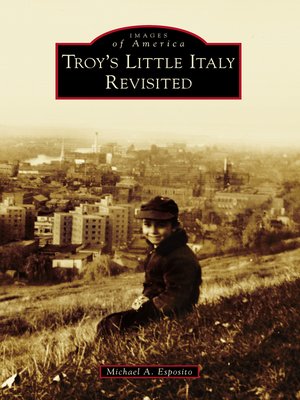
Sign up to save your library
With an OverDrive account, you can save your favorite libraries for at-a-glance information about availability. Find out more about OverDrive accounts.
Find this title in Libby, the library reading app by OverDrive.



Search for a digital library with this title
Title found at these libraries:
| Loading... |
A significant part of Troy's history, and that of its neighborhood, is the immigration of diverse ethnic groups. By 1900, the US Census reported 465 Italian-born residents in Troy, and in 1930, there were 2,000 Italian immigrants. From 1900 to the 1950s, Little Italy, bordering the central business district from Ferry Street to the Poestenkill and from Fourth Street to Prospect Park, was predominately an Italian or Italian American neighborhood. Among the close-knit families of Troy's Little Italy were import stores, 60 mom-and-pop shops, churches, schools, a community center, and a veterans' post, all of which were found within a 20-block radius. America's Little Italy neighborhoods became centers of ethnic culture and heritage. In the 1960s, urban renewal challenged Troy and other cities with mixed results. Today, there is resurgence in Troy, with plans to expand the city's central historic district to include most of Little Italy. In the meantime, empty nesters, artists, and young professionals are moving into the neighborhood as valuable community partners continue to support the efforts of the neighborhood group Troy Little Italy.






